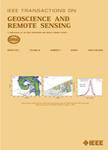版权所有:内蒙古大学图书馆 技术提供:维普资讯• 智图
内蒙古自治区呼和浩特市赛罕区大学西街235号 邮编: 010021

作者机构:China Univ Petr Natl Key Lab Petr Resources & Engn Beijing 102249 Peoples R China China Univ Petr CNPC Key Lab Geophys Explorat Beijing 102249 Peoples R China China Univ Petr Natl Key Lab Petr Resources & Engn CNPC Key Lab Geophys Explorat Beijing 102249 Peoples R China China Univ Petr Coll Sci Beijing 102249 Peoples R China
出 版 物:《IEEE TRANSACTIONS ON GEOSCIENCE AND REMOTE SENSING》 (IEEE Trans Geosci Remote Sens)
年 卷 期:2025年第63卷
核心收录:
学科分类:0808[工学-电气工程] 1002[医学-临床医学] 08[工学] 0708[理学-地球物理学] 0816[工学-测绘科学与技术]
基 金:National Key Research and Development Program of China [2018YFA0702502]
主 题:Linear programming Tensors Computational modeling Data models Stratigraphy Optimization Geoscience and remote sensing Eigenvalues and eigenfunctions Accuracy Computational efficiency Full-waveform inversion (FWI) objective function regularization structure tensor velocity modeling
摘 要:Full-waveform inversion (FWI) is a method for obtaining velocity models. Because of its theoretical completeness, the final modeling results are often superior to those of velocity modeling methods such as stacking velocity analysis, migration velocity analysis, and velocity tomography. FWI usually takes the L2 norm of the residuals between observed and simulated data as the objective function. The current velocity model that best fits the observed data is obtained by solving the objective function. However, during FWI, there is a strong ill-posedness due to its limited conditions. To solve this problem, regularized constraints or gradient preconditioning methods are commonly introduced. In this article, we propose a regularization method that incorporates prior information, aiming to alleviate the aforementioned issues to some extent. This method adds a regularization term based on structural tensors to the original L2 norm objective function, introducing subsurface structural information in conventional regularized constraints of FWI. It smooths the velocity model along layer interfaces to ensure that the obtained inversion results are more consistent with the true velocity model. The inversion results from synthetic data of the Marmousi model and BP 2004 benchmark velocity model demonstrate the feasibility and effectiveness of this method. The noisy data FWI further demonstrates the robustness of this method. Moreover, the proposed method can better recover the small-scale structures in the velocity model and significantly improve the resolution of the velocity model.